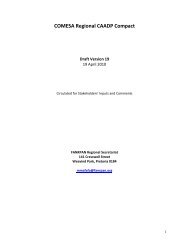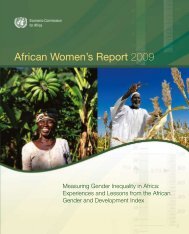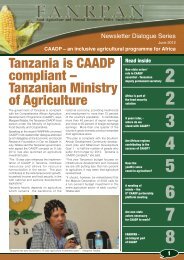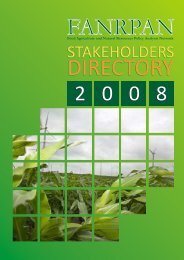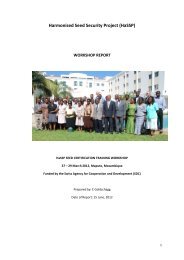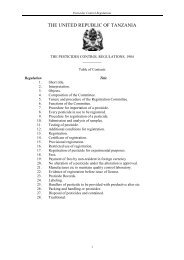Community-driven development decision tools for rural - IFAD
Community-driven development decision tools for rural - IFAD
Community-driven development decision tools for rural - IFAD
- No tags were found...
Create successful ePaper yourself
Turn your PDF publications into a flip-book with our unique Google optimized e-Paper software.
Determining commitment to CDD objectivesThe points in Box 38 suggest two key questions:• Does CDD require special project design methodologies that may contribute to reducingthe risk of deviating from CDD objectives during implementation?• What changes should be introduced in the project management per<strong>for</strong>mance monitoringsystem to keep implementation on the right track?Important factors in CDD projects include the capacity of project officers to stick to CDD objectivesin the face of inevitable adverse circumstances and political pressure to deviate from them ,alongwith the extent of public institutions’ commitment. 42 Institutional and communication assessmentsare two useful methodologies in the <strong>for</strong>mulation and appraisal phase that can determine the extentto which CDD objectives are shared by responsible public administration officers. Involving allpotential stakeholders in building consensus at all relevant levels is a key component of bothinstitutional and communication assessment. During implementation, it becomes the most delicatetask of project coordinators; the coordinators’ skill in negotiating enduring consensus is one of theirmost precious assets <strong>for</strong> ensuring the success of the project.A simple method of testing stakeholders’ commitment to CDD objectives could be used onfield visits during project <strong>for</strong>mulation and appraisal missions. This method would provide a basis<strong>for</strong> applying the <strong>IFAD</strong> Results and Impact Management System (RIMS) with its very usefuldistinction between first, second and third level results (i.e. output, outcomes, impact) during theproject’s M&E. The method consists of sharing the conceptual steps outlined in Box 41 with theproject implementation partners and requesting them to agree, disagree or modify each of thesteps proposed by the mission. The procedure would help identify areas of potential differenceand the actors who are likely to work <strong>for</strong> or against the expected third-level results of the project(e.g. <strong>development</strong> of the CBOs and the related support mechanisms). Once summarized in aSWOT analysis table, the material would provide a clear basis <strong>for</strong> engaging in policy dialogue,strengthening critical project components and correcting design features with poor chances ofhaving adequate implementation support.Box 38Improving the chances of achieving thirdlevelresults in CDD projectsTry the following procedure in project design:1. Start from the expected third-level results.2. Formulate corresponding project exitarrangements.3. Identify the activities that lead to the exitarrangements.4. Assess which “rules of the game” mustchange to facilitate implementation of theactivities.5. Identify the partners who can support thechanges.6. Identify <strong>for</strong>ces that may act againstchanging the rules of the game7. Establish a dialogue with supportive andopposing <strong>for</strong>ces at the policy andoperational levels.8. Define the project accountabilitymechanisms.9. Negotiate the roles of grass-rootsstakeholders and their representatives inthese mechanisms.At each step, ask the following questions:• What is the project doing <strong>for</strong> the institutional<strong>development</strong> of the CBOs?• Do all stakeholders understand it? Agreewith it?• Are sufficient resources allocated by theproject to achieve it?42 The World Bank OED review of the effectiveness of the bank’s CDD projects in 2006 reports that most government officers feltthat people’s participation is good <strong>for</strong> <strong>development</strong>, but they did not think the same of people’s empowerment.78



